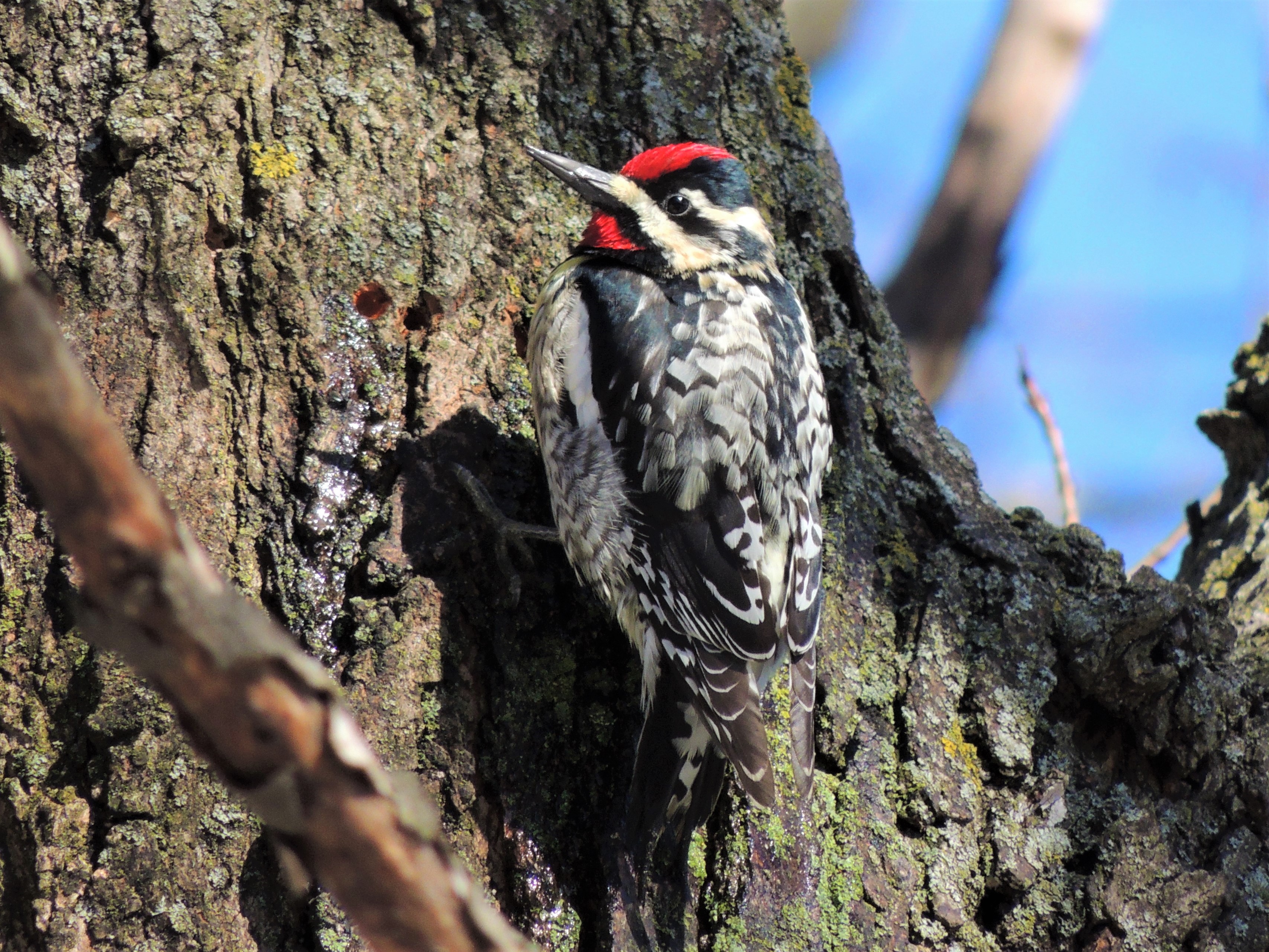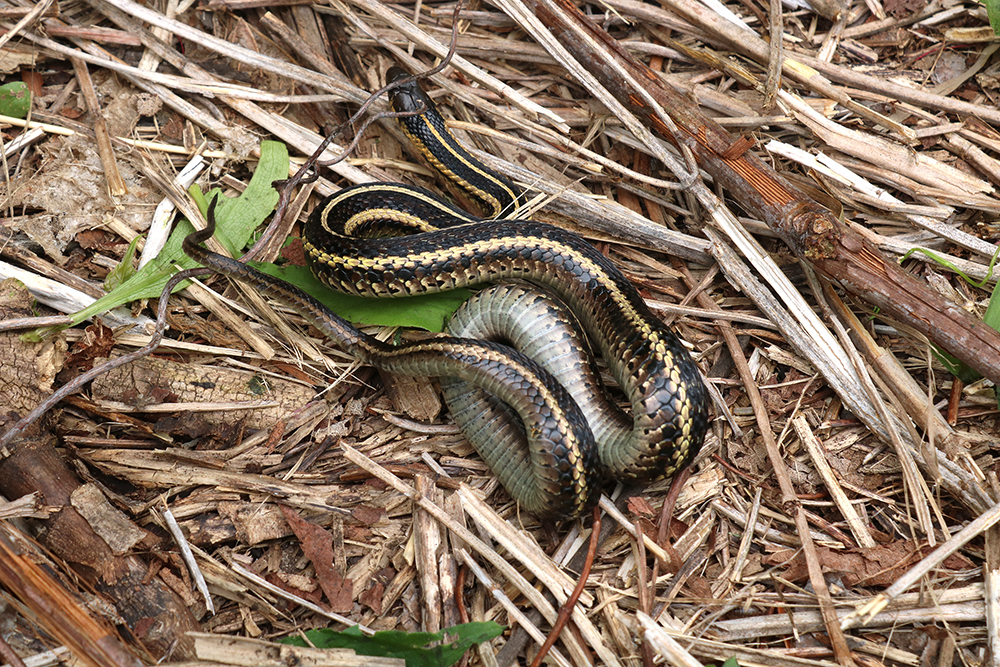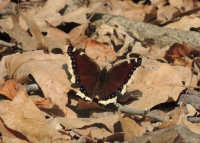The Mourning Cloak
The Mourning Cloak, named after the garb someone would traditionally wear if “in mourning,” is a large butterfly and can be identified by its rich, dark brownish wings lined with a cream colored edge and blue spots. Since it is an early season butterfly when the air temperature still has a chill, the dark coloration of its wings helps to absorb solar heat in order for its body to reach necessary temperatures for flight. These butterflies make a home of various habitats and have a wide geographic range, which makes them an almost guaranteed sighting at each of the Urban Ecology Center parks!
In the springtime, usually with the first warm days of March, they wriggle out of their overwintering nooks and crannies in the woods and the males will choose a spot among the trees to perch, bask, and wait for a female to flutter past. Mating occurs in the springtime once more butterflies begin to show up, with a following generation emerging from chrysalises come August. These guys have lifespans that are on the long-end as far as butterflies go, topping out at about a year with an average of about ten to eleven months. Picture surviving a Wisconsin winter as a butterfly!

Eating habits are another interesting piece about this species. Adults do, in fact, enjoy occasional stops at flowers for nectar, but they most commonly access decaying fruits, and the sap in trees! In the summer they are even known to sometimes use holes in trees that had been drilled by Yellow-Bellied Sapsuckers (a species of woodpecker) in order to reach sap. Keep your eyes peeled for these sapsucker holes in trees in the parks!
Yellow-Bellied Sapsucker drilling holes. Photo by Matt Flower
Butler’s Gartersnake
Although there has been very little scientific research done on the Butler’s Gartersnake, there may be more stories to tell about this snake than any other animal we find at the Urban Ecology Center’s green spaces. First of all, if there ever were an animal that could be a Milwaukee icon, it’s the Butler’s Gartersnake. Move over Harley Davidson and Miller. If you look at the snake’s distribution in Wisconsin, it’s found only in the Greater Milwaukee area with the City of Milwaukee at the Center. Most Butler’s are found in Ohio, with tiny pockets in Indiana and Ontario (where they are endangered) and the Milwaukee population has likely been separated from them since the last glaciers melted about 13,000 years ago! So if you want to be proud of a hometown hero, the Butler’s Gartersnake should be on your list.

Butler’s Gartersnake
These small snakes are currently listed as a Species of Special Concern in the state of Wisconsin, downgraded from their Threatened status back in 2014. Though this may seem like a step in the right direction, declining populations cause for continued vigilance. We’re excited to continue to help study their population in Three Bridges Park, using a series of coverboards to attract them for our weekly summer surveys. These snakes emerge from their hibernacula in the early spring and, like the Mourning Cloak, enjoy basking in order to raise their body temperatures. Males and females will mate, and once summer comes along they use the coverboards as a source of heat, which in turn helps females’ embryos develop at a healthy rate to be birthed later in the summer (typically between July and September).
As they begin to show themselves on the trails, please be respectful and make sure to leave them where you find them. And, if you come across a coverboard, please leave it alone as we do not want to injure any wildlife or tamper with scientific research underway. If you’d like to get involved, we invite you to take part in our surveys this summer! Until then, be sure to keep an ear out for our vocal springtime migrants, and your eyes peeled for our quieter, more secretive friends.
This article was co-written by Tim Vargo, Manager of Research and Community Science
References:





